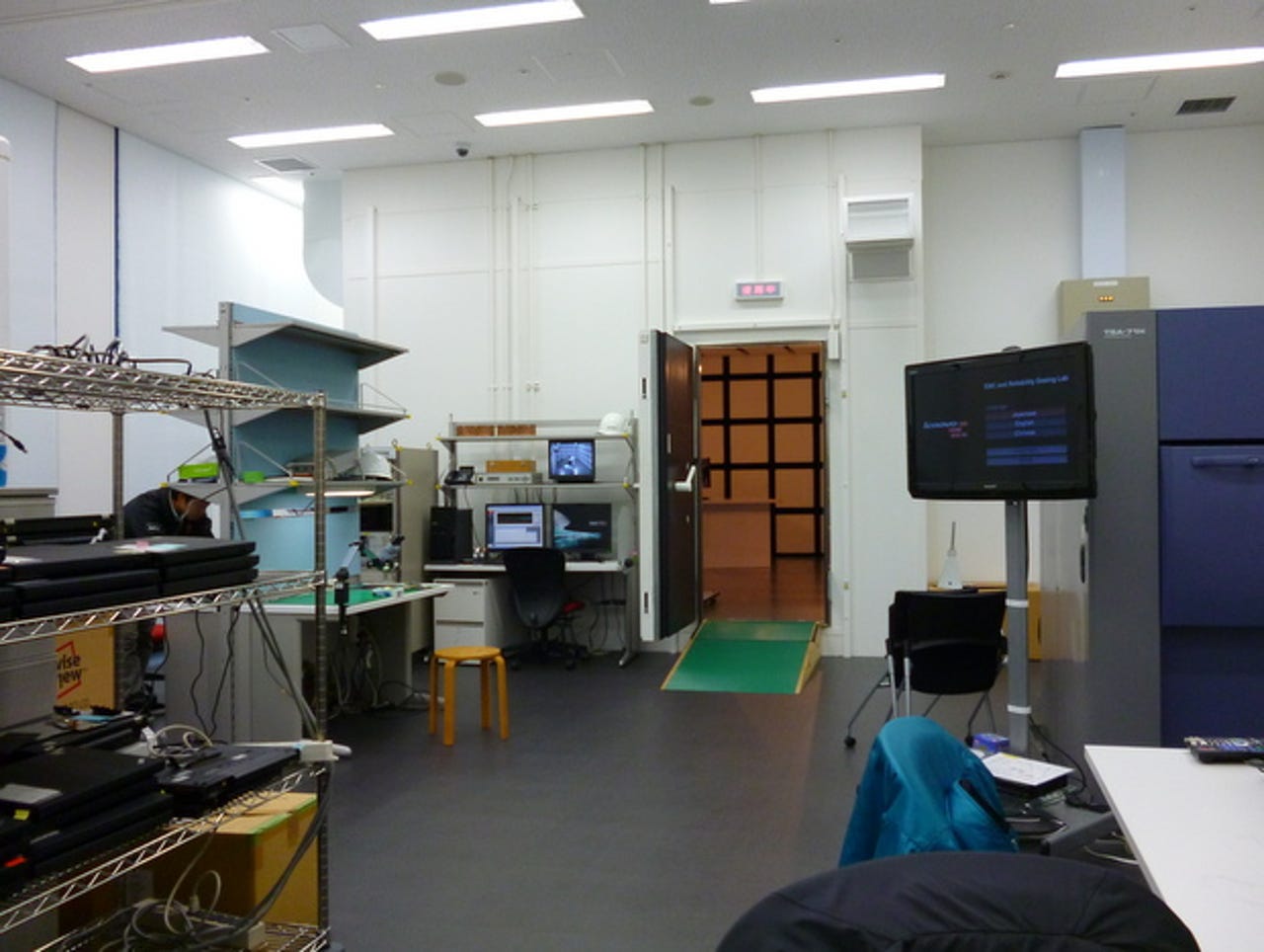Lenovo puts ThinkPads to test


YOKOHAMA, JAPAN--The Lenovo Yamato Lab designs and tests the Chinese PC manufacturer's ThinkPad line of products.
Previously part of IBM, Yamato Lab became part of Lenovo when it took over Big Blue's PC division in 2005.
In 2010, the laboratory moved from Yamato to its current location in Yokohama's urban business district Minato Mirai 21 but its name remained unchanged.
In a tour of its test facilities, Lenovo showed ZDNet Asia how it puts its laptops through rigorous tests before bringing the devices to market.
During the thermal shock test, ThinkPad devices and chargers are subject to cold and heat tests ranging from -20 degrees Celsius to 60 degrees Celsius for a few days.
This is to simulate airplane cabin temperature which may drop below zero degrees Celsius because of high altitudes, and ship cargo temperature which may go up to 50 to 60 degrees Celcius.
In the anechoic chamber, researchers measure noise coming from the laptop. While most of the noise comes from the fan or hard disk, the AC adapter and electrical ports are prone to produce noise too.
This test makes sure laptops produce as little noise as possible so users can use their devices in quiet environments such as the library without disturbing others.
In the EMI (electro-magnetic interference) chamber, Lenovo measures the electrical field strength of ThinkPad devices to ensure they comply with international standards.
In a dust test chamber, ThinkPads are subjected to large amount of dust particles.
The company's researchers make sure that even under dusty conditions, the CPU does not overheat and its capabilities are functioning at optimal levels.
In this pressure test, a robotic arm presses down on the keys of the keyboard to make sure they don't break or come off easily.
This test "bends" the monitor to make sure the screen does not crack under external pressures.
This is one of the many drop tests Lenovo conducts. The robotic arm lifts the laptop to about 1.5 meters above the ground before releasing it to see if the device can withstand such shocks.
The corner drop test makes sure the laptop is still functionable even when the user drops the device and it lands on one of its corner edges.
The tilt drop mimics how a user might put down the laptop, and researchers use such tests to make sure the HDD still functions despite the angle it is dropped from.